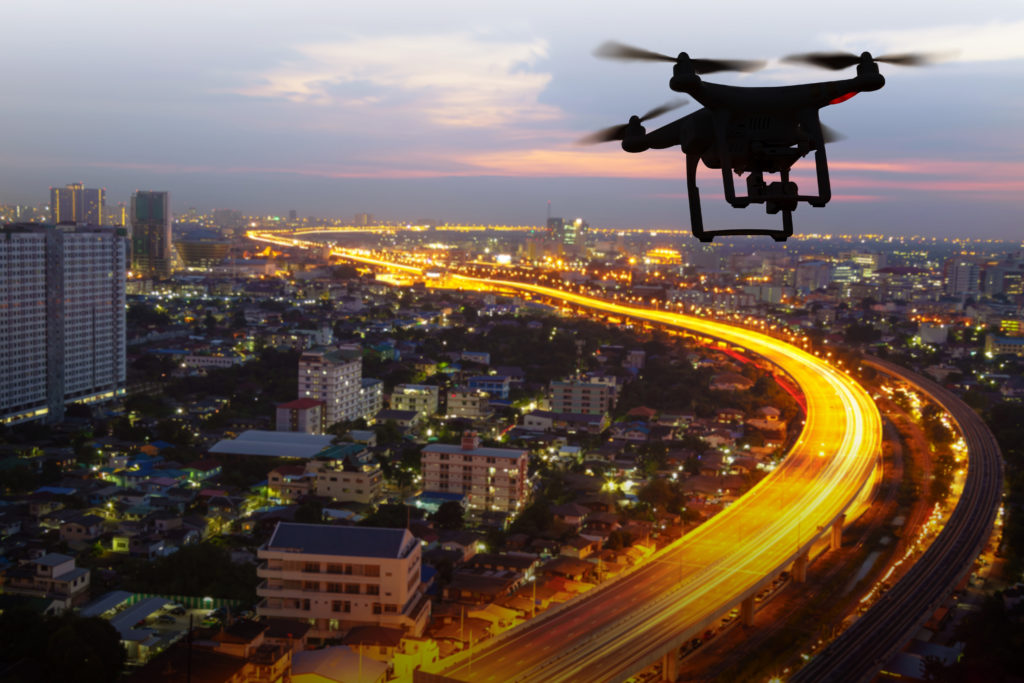Emerging tech in CRE: Robotics in CRE

November 2021 // NAI DESCO Blog
Robotics in CRE: How automation is changing the real estate value proposition
From smart buildings and smart cities to AI and machine learning, there’s little room for doubt that the world is rapidly moving towards a fully tech-enabled society. Forward-looking commercial real estate (CRE) professionals are embracing these new capabilities, and revolutionizing the way we add value to commercial real estate operations.
In the previous article, we discussed the impact of IoT (the Internet of Things) and Artificial Intelligence (AI) in CRE. In part three of this ongoing series, we examine the role robotics plays in moving real estate into the future.
Hard-working hardware
One of the areas where the use of robotics in CRE has really taken off is drone-assisted operations. Drone technology is being used to target some key challenges faced in the industry.
Processes that used to be far more complicated and expensive, like aerially mapping a property, can now be accomplished in a fraction of the time, and at a lesser expense. Part of the benefit is that drones allow developers and marketers to tell a story, as the development unfolds week by week in stunning images from on-high. Large construction sites can also be more easily managed when material stocks and inventory are being monitored with drones.
Another use of the tech is cutting down the time spent on surveying properties for maintenance and compliance purposes. Aerial surveys can easily reveal damage or deterioration and allow owners to address the problem sooner.
Drones equipped with specialized imaging cameras can also detect major issues like gas leaks or help pinpoint areas of heatloss for energy optimization. Given the drive towards cleaner, more energy-efficient buildings, this is a technology that is likely to become a cornerstone of future CRE operations.
Virtual presence
Robots have also gained some traction working in building interiors. Machine technology can be used to map interior spaces and even, to present them to prospective tenants.
San Francisco-based operator Zenplace uses small telepresence robots to show properties, complete with a screen for the realtor to interact with clients – all from the convenience of the office. This means a more convenient process for prospective tenants, who can gain access to a property using an app on their phone while cutting down travel time for the agent.
A bot by any other name
Another area where robotics is taking CRE by storm is software robots aka “bots”. Robotic Process Automation (RPA) is the use of bots to automate mundane and repetitive tasks that would otherwise need to be done by human workers. This means time-intensive work like document management or invoice processing can be outsourced, leaving brokers free to focus on larger strategic goals and more creative problem-solving.
Using RPA, brokerages can also extract large amounts of untapped data from existing databases. This is likely to be an increasingly useful application in years to come, as digitization in CRE increases and large volumes of new data start pouring in from a slew of smart buildings being added to existing portfolios.
What the bots can’t currently do is analyze that data – the creative interpretation that task requires is best left to humans.
Reimagining Logistics Assets
On the back of a burgeoning e-commerce industry, robotics is also adding value through streamlined logistics processes. The landscape of logistics assets is changing, with a movement towards micro-distribution centers and multi-purpose retail spaces opening up new opportunities.
In a research report from the Commercial Real Estate Development Association (NAIOP) these new trends, and the robotics enabling them, are explored in detail. Some key findings are that previously underutilized spaces, including areas in malls or old parking garages, are finding new purposes as distribution sites that help solve the Last Mile problem of logistics.
Given their location in urban and suburban centers, these new types of logistic assets are blurring the lines between logistics and retail. Landlords and owners can now install logistics mini-sites in existing buildings, largely thanks to automated storage and retrieval systems that shrink the operational footprint. It’s a new way of imagining space and how assets can best be put to work.
An additional interesting trend is that larger logistics assets are now often being established further away from city centers. While this may sound counter-intuitive, with greater automation the need for on-site staff decreases, and companies can take advantage of cheaper land and operations costs in more remote areas. The NAIOP report goes on to quote ABI Research’s projection that, by 2025, some 4 million commercial robots will be hard at work in over 50 000 warehouses.
The human face of robotics
By now, you could be forgiven for thinking that this sounds like the start of a robot revolution that will put a lot of people out of work in the long run. The truth is, we are far from independently functioning robotics and AI.
Advances in these technologies allow people to do their jobs faster and more easily, taking a lot of the monotonous aspects out. As rapid-fire data-handling, logistics, and site management become the norm, there will also be an even greater need for people to oversee those processes. And the potential robotics offer for improving CRE operations means more ways to add value for customers and CRE professionals alike.